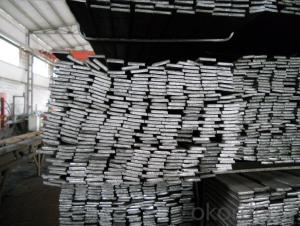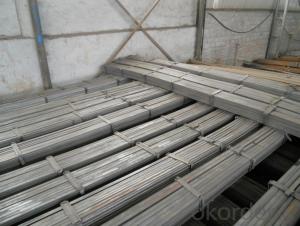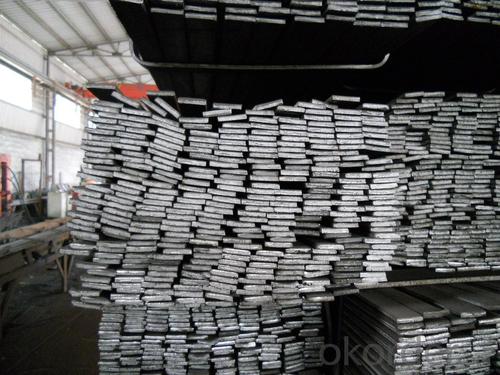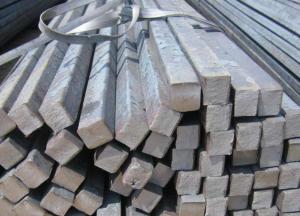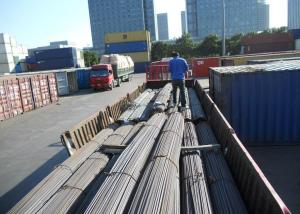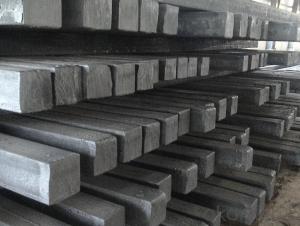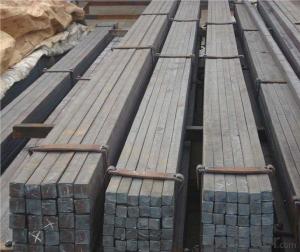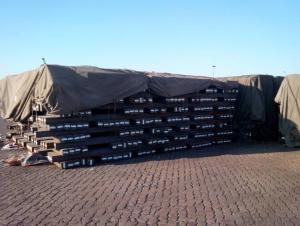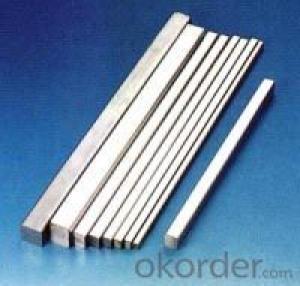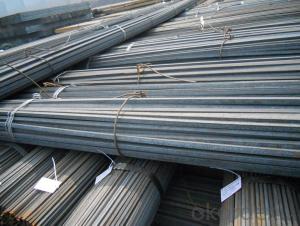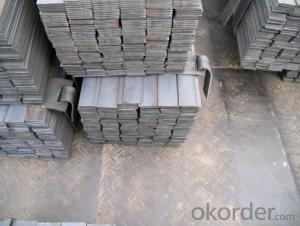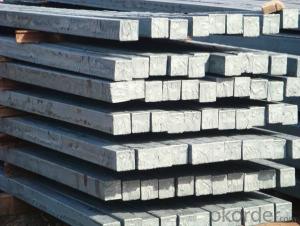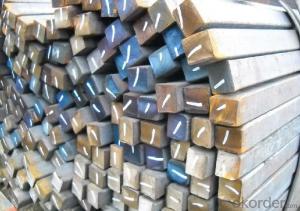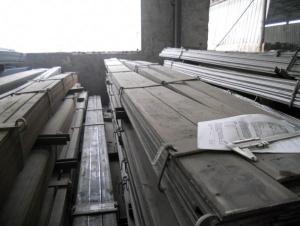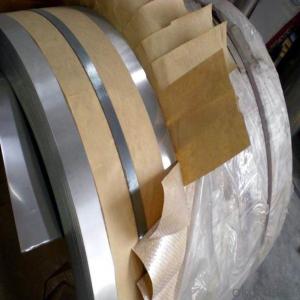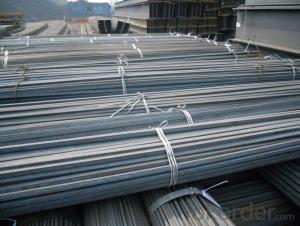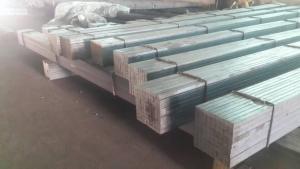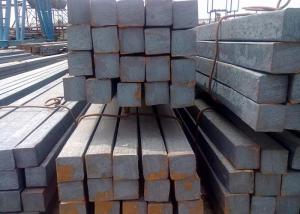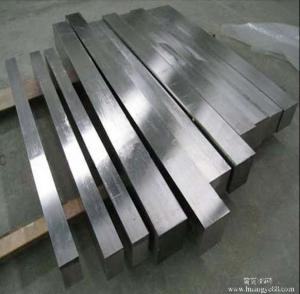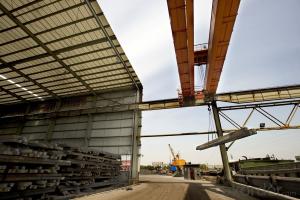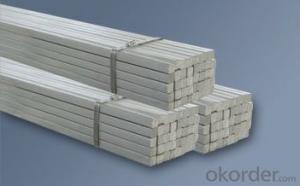Hot Rolled Steel Slit Flat Bars and Hot Rolled Flat bars
- Loading Port:
- Tianjin
- Payment Terms:
- TT or LC
- Min Order Qty:
- 25 m.t.
- Supply Capability:
- 200000 m.t./month
OKorder Service Pledge
OKorder Financial Service
You Might Also Like
Product Description:
OKorder is offering Hot Rolled Steel Slit Flat Bars and Hot Rolled Flat bars at great prices with worldwide shipping. Our supplier is a world-class manufacturer of steel, with our products utilized the world over. OKorder annually supplies products to European, North American and Asian markets. We provide quotations within 24 hours of receiving an inquiry and guarantee competitive prices.
Product Applications:
Hot Rolled Steel Slit Flat Bars and Hot Rolled Flat bars are ideal for structural applications and are widely used in the construction of buildings and bridges, and the manufacturing, petrochemical, and transportation industries.
Product Advantages:
OKorder's Hot Rolled Steel Slit Flat Bars and Hot Rolled Flat bars are durable, strong, and resist corrosion.
Main Product Features:
· Premium quality
· Prompt delivery & seaworthy packing (30 days after receiving deposit)
· Corrosion resistance
· Can be recycled and reused
· Mill test certification
· Professional Service
· Competitive pricing
Product Specifications:
Manufacture: Hot Rolled Steel Slit Flat Bars and Hot Rolled Flat bars
Grade: Q195 – 235 ;SS400
Certificates: ISO, SGS, BV, CIQ
Length: 6m – 12m, as per customer request
Packaging: Export packing, nude packing, bundled
Chemical composition of Q235
Alloy No | Grade | Element(%) | ||||
C
| Mn
| S
| P
| Si
| ||
Q235
|
B
|
0.12—0.20 |
0.3—0.7 |
≤0.045 |
≤0.045
|
≤0.3
|
Physical properties of Q235
Alloy No | Grade | Yielding strength point(Mpa) | Tensile strength (Mpa) | Elongation after fracture(%) | ||||||
Thickness (mm) | Thickness (mm) | |||||||||
≤16 | >16--40 | >40--60 | >60--100 | ≤16 | >16--40 | >40--60 | >60--100 | |||
≥ | ≥ | |||||||||
Q235 |
B |
235 |
225 |
215 |
205 |
375--500 |
26 |
25 |
24 |
23 |
FAQ:
Q1: How soon can we receive the product after purchase?
A1: Within three days of placing an order, we will begin production. The specific shipping date is dependent upon international and government factors, but is typically 7 to 10 workdays.
Q2: How do we guarantee the quality of Hot Rolled Steel Slit Flat Bars and Hot Rolled Flat bars?
A2: We have established an advanced quality management system which conducts strict quality tests at every step, from raw materials to the final product.
Q3: The products are invoicing on theoritical weight or on actual weight basis ?
A3: We can do it in both manners, according to buyers' requirement.
Q4: What is the normal tolerance of your falt bars ?
A4: Normally 7%-9%, but we can also produce the goods according to the customers' requests.
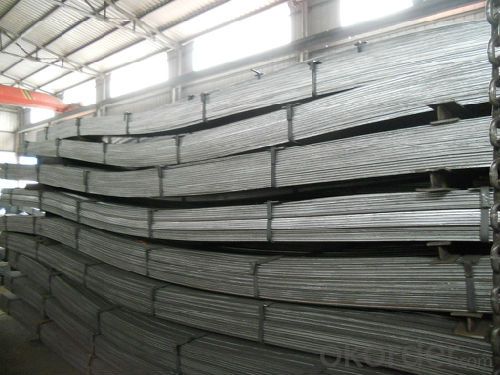
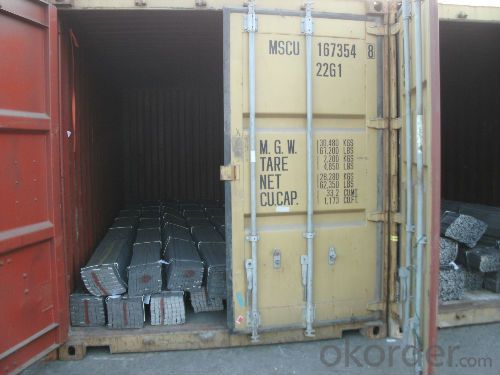
- Q: What are some common techniques for using a steel square in furniture making?
- Some common techniques for using a steel square in furniture making include checking for squareness and ensuring accurate angles when cutting and joining wood pieces. The steel square is often used as a guide for marking and measuring right angles, as well as for creating precise miter cuts. It can also be used to ensure accurate placement of hardware and components during assembly. Overall, the steel square is an essential tool for maintaining accuracy and precision in furniture making.
- Q: Can a steel square be used for layout and design work?
- Yes, a steel square can be used for layout and design work. Steel squares, also known as framing squares or carpenter squares, are versatile tools commonly used by carpenters, woodworkers, and other tradespeople for layout, design, and measurement tasks. They consist of a long arm and a shorter perpendicular arm, forming a 90-degree angle. The long arm is typically marked with measurements and angles, allowing for accurate layout of lines, angles, and squares. The shorter arm is useful for checking corners and ensuring perpendicularity. Steel squares are durable, reliable, and can be easily used for various layout and design tasks, such as marking cuts, checking angles, and creating precise measurements.
- Q: What are the different markings on a steel square used for?
- A steel square, also known as a framing square or carpenter's square, is a versatile tool commonly used in woodworking, construction, and other trades. It consists of two arms, typically made of steel, that meet at a 90-degree angle. The arms are marked with various measurements and markings, each serving a specific purpose. 1. Degree Scale: One of the most prominent markings on a steel square is the degree scale, which allows users to measure and mark angles other than 90 degrees. This scale is useful for tasks such as cutting rafters, stair stringers, or other angled cuts. 2. Inch Scale: The inch scale is typically marked along one or both arms of the square. It allows for precise measurements in inches, making it handy for measuring and marking lengths or widths of materials. 3. Rafter Tables: Many steel squares have rafter tables printed on one of the arms. These tables provide measurements and angles for common rafter cuts, hip and valley rafter cuts, and other roofing-related calculations. They help carpenters and roofers determine the proper angles and lengths of rafters needed for a particular roof design. 4. Octagon Scale: Some steel squares feature an octagon scale, which is used for marking out octagonal shapes. This scale provides the necessary angles and lengths required to construct an octagon, making it useful for projects like building gazebos or other eight-sided structures. 5. Protractor: Many steel squares have a protractor or angle finder built into one of the arms. This allows users to measure and mark angles accurately, especially when trying to replicate or transfer an existing angle. 6. Center Finding Scale: Some steel squares include a center finding scale that helps users locate the center point of a board or material. This scale is useful for tasks such as drilling holes or marking the midpoint for symmetrical cuts. Overall, the different markings on a steel square serve to enhance its versatility and functionality. They allow users to accurately measure angles, mark dimensions, and perform various calculations, making the tool an essential companion for carpenters, woodworkers, and construction professionals.
- Q: How does a steel square assist in checking the alignment of power tools?
- A steel square assists in checking the alignment of power tools by providing a straight and accurate reference edge or surface. It can be used to ensure that the tool's blade or fence is perfectly perpendicular or parallel to the reference edge, allowing for precise and accurate cuts or measurements.
- Q: What are some common applications for a steel square in woodworking?
- A steel square, also known as a framing square or carpenter's square, is a versatile and essential tool in woodworking. It is primarily used to ensure accuracy and squareness in various woodworking tasks. Here are some common applications for a steel square: 1. Checking for squareness: One of the main uses of a steel square is to check if a corner or joint is perfectly square. It allows woodworkers to ensure that their projects are aligned properly, preventing any issues with stability or aesthetics. 2. Marking and measuring: The square's long blade and tongue, along with the marked scales, enable precise measurements and marking of straight lines. It is particularly useful for marking cut lines, angles, and notches, ensuring accuracy during cutting and shaping processes. 3. Determining angles: Steel squares often come with angle scales that allow woodworkers to accurately measure and mark different angles. This is helpful when creating angled cuts, miter joints, or bevels on wood pieces. 4. Laying out staircases: When building or repairing staircases, a steel square is invaluable for marking the rise and run of each step. It aids in ensuring consistency and uniformity, resulting in safe and functional staircases. 5. Checking stock alignment: Woodworkers frequently use steel squares to verify the straightness and flatness of stock. By placing the square against the edge or face of a piece of wood, they can quickly identify any irregularities and make necessary adjustments. 6. Checking saw blade alignment: A steel square can be used to check the alignment of a table saw blade or miter saw by placing it against the blade and the saw's fence. This helps ensure accurate and parallel cuts, minimizing waste and improving the overall quality of the workpiece. 7. As a cutting guide: Steel squares can act as a reliable cutting guide when used in conjunction with a circular saw or jigsaw. By clamping the square to the material, woodworkers can achieve straight and accurate cuts along the edge of the square. 8. Creating perpendicular lines: Steel squares are ideal for drawing perpendicular lines on wood surfaces, such as when marking out mortises, tenons, or dowel holes. The square's 90-degree angle allows for precise alignment and ensures that the workpiece is properly squared. In summary, a steel square is an essential tool in woodworking that is used for checking squareness, marking and measuring, determining angles, laying out staircases, checking stock alignment, verifying saw blade alignment, acting as a cutting guide, and creating perpendicular lines. Its accuracy and versatility make it indispensable for woodworkers of all skill levels.
- Q: Are there any safety precautions to consider when using a steel square?
- Yes, there are safety precautions to consider when using a steel square. Firstly, it is important to handle the square with care to avoid any injuries or cuts from its sharp edges. Additionally, one should ensure that the working area is well-lit and free from any obstructions to prevent accidents. It is also necessary to use the square on a stable and flat surface to ensure accurate measurements and avoid any instability that could lead to injuries. Lastly, it is advisable to wear appropriate protective gear, such as gloves and safety glasses, to minimize any potential hazards.
- Q: Can a steel square be used for measuring the height of a building?
- No, a steel square cannot be used for measuring the height of a building as it is a tool primarily used for right angle measurements in carpentry and not suitable for measuring vertical distances.
- Q: Can a steel square be used for gate post layout and installation?
- Yes, a steel square can be used for gate post layout and installation. A steel square, also known as a framing square or carpenter's square, is a versatile tool that is commonly used in construction and woodworking projects. It consists of a long, straight edge and a perpendicular shorter blade, forming a "L" shape. The long edge of the steel square can be used to mark and layout the position of gate posts accurately. It can also be used to measure angles and ensure that the gate posts are installed at the correct level and alignment. Additionally, the steel square can be used to check the squareness and plumbness of the gate posts during installation, ensuring a sturdy and well-aligned gate. Overall, a steel square is a valuable tool for gate post layout and installation, providing accuracy and precision in the construction process.
- Q: How do you use a steel square for marking hip and valley rafters?
- To use a steel square for marking hip and valley rafters, you would start by placing the square on the rafter board with the body of the square against the edge of the board. Next, you would align the tongue of the square with the edge of the rafter and mark the desired angle for the hip or valley cut. This marking will help you accurately cut and shape the rafters to fit the specific angle required for the hip or valley.
- Q: Can a steel square be used for checking the squareness of a table saw blade?
- No, a steel square is not suitable for checking the squareness of a table saw blade. A specialized tool known as a dial indicator or a precision square is recommended for this task as it provides more accurate and reliable measurements.
Send your message to us
Hot Rolled Steel Slit Flat Bars and Hot Rolled Flat bars
- Loading Port:
- Tianjin
- Payment Terms:
- TT or LC
- Min Order Qty:
- 25 m.t.
- Supply Capability:
- 200000 m.t./month
OKorder Service Pledge
OKorder Financial Service
Similar products
Hot products
Hot Searches
Related keywords
